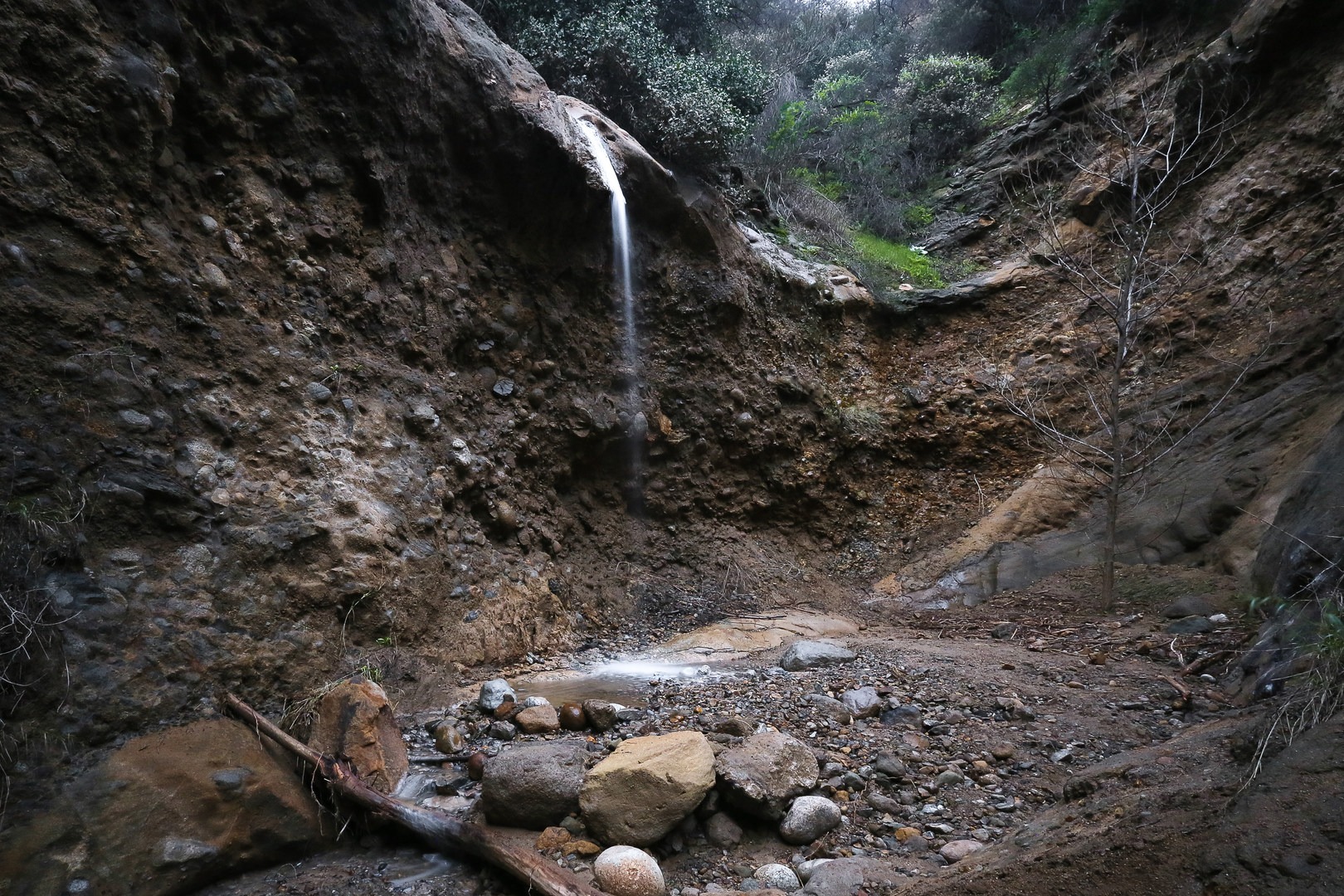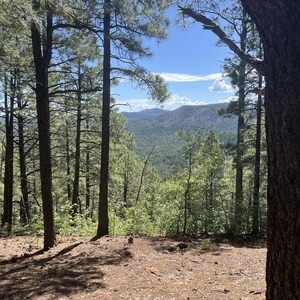The Big Mo Trail to the Coal Canyon Waterfall heads 3 miles up a wet, shaded canyon in a low-traffic corner of Chino Hills State Park, eventually leading to a 20-foot waterfall that runs down a mineralized lip and into a grotto.
Once the locale of a coal mine that operated from 1876 to 1878 and more recently slated to be a 1,500-unit housing development, the freeway underpass meant to access the homes instead had its pavement ripped out and now serves as a wildlife passage connecting Chino Hills State Park on the north side of the freeway and Cleveland National Forest on the south side. While that seems like a rare glimmer of excitement for an area enveloped by two counties, Riverside and Orange, where natural preservation generally is overshadowed by other developments, it also means that the nearest parking access point is at the eastern end of the Santa Ana River Trail. This necessitates a mile-long walk wedged between State Route 91 and a golf course to reach the trail.
The Big Mo Trail, named after a 200-year-old Tecate cypress that once stood in the canyon, begins at the entrance gate to the park. Sadly, the cypress was burnt in a 2002 wildfire that swept through the area. The trail follows a paved road before quickly splitting left onto a wide dirt road. Shortly thereafter, it splits right onto a smaller foot trail signed as the Big Mo Trail. From here the trail heads up a grassy area to the left of a wash before ending. At this point, hikers must climb down into the wash for the remainder of the hike.
Coal Canyon soon winds away from the freeway noise and into the shade of lush canyon walls that gradually close tighter and tighter around the wash. Prickly pear, yucca and wild fennel dot the hike. The wash remains dry for most of the year, but as you approach the waterfall, the stream comes into view. The waterfall appears suddenly as you round a corner. The wash narrows into a boxed-in area of dudleya-lined stone and dirt walls. The stream is wide enough for pools to appear.
For all of the self-promotion and spectacle of this region of Southern California, there are relatively few natural features that can mirror the grandeur of the architectural marvels in and around Los Angeles. Waterfalls of any size are few and far between on this side of the Santa Ana Mountains, so the relatively tame falls still ranks as a unique destination for this area. The lack of any improvements to the trail lend the hike an unkempt feeling of wildness, rather than the tamer manicured and more frequently visited trails throughout most of the region's parks.
After admiring the falls, retrace your steps to return to the car.
Be aware that mountain lions and rattlesnakes can be present in the area, particularly during the warmer months. The wash is shaded, but there is no complete shade or water along the hike.











Comments
Sign In and share them.